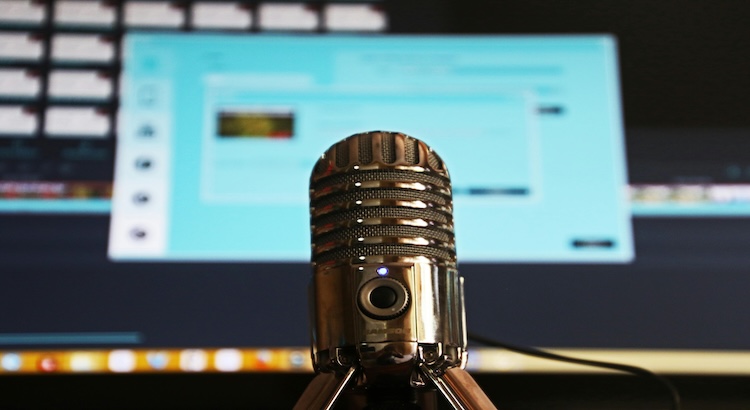How to Transcribe Podcast Episodes for SEO and Accessibility
Podcasts keep growing in popularity, letting people enjoy content anytime, anywhere. But when you rely only on audio, you miss a big audience—those who are deaf or hard of hearing. Also, search engines like Google can’t read or rank spoken words without help. In this guide, you’ll learn how turning your podcast audio into transcripts can make your content easier to find online and accessible to everyone. This can help grow your brand and connect you to new listeners.
Why Should You Transcribe Your Podcast?
- Boost SEO and Discoverability: Search engines (like Google) can’t “hear” audio. A transcript gives them keywords to index, making your show appear in more searches and helping you attract new listeners.
- Make Your Content Accessible: About 15% of American adults have some hearing loss (CDC, 2021). Transcripts let everyone enjoy your episodes and feel included.
- User Convenience: Some people prefer to read or skim instead of listening. Transcripts make it easy to find quotes, cite your podcast, or revisit main ideas.
- Repurpose Content: You can turn transcripts into blog posts, social media snippets, or email newsletters with little extra work.
How to Transcribe Your Podcast: Step-by-Step Guide
Step 1: Plan Your Transcription Workflow
Before recording, think about how transcription fits into your production:
- Budget and Time: Do you want to transcribe episodes yourself, use automated transcription tools, or hire a professional service?
- Episode Frequency and Length: Weekly or long episodes may need a reliable, scalable solution—like GoTranscript—to stay efficient.
Step 2: Record Clear Audio
Accurate transcripts depend on having good sound:
- Use a Quality Microphone: Dynamic or condenser microphones reduce background noise and capture voices clearly.
- Set Up the Space: Use soundproofing, a pop filter, and keep the microphone at a steady distance.
- Test Audio Levels: Always do a test to make sure no voices are too loud (clipping) or too soft (fading).
Step 3: Pick a Transcription Method
Automated Transcription Tools
- Examples: Services like Otter.ai, Descript, or AI transcription subscriptions.
- Pros: Fast and low cost.
- Cons: May make mistakes with accents, noise, or complex terms—manual editing is often needed.
Professional Transcription Services
- What’s Included: Real people listen and transcribe your audio, handling multiple speakers and special terms.
- Pros: High accuracy, saves editing time. Professional services like GoTranscript deliver trusted results.
- Cons: Costs more than DIY; turnaround time varies.
DIY (Manual) Transcription
- Method: Listen and type everything yourself.
- Pros: Total control over the output.
- Cons: Takes a lot of time.
Step 4: Edit and Format Your Transcript
Always review your transcript before publishing:
-
Proofread:
- Fix spelling, misheard words, and brand names.
- Check that speaker names are correct if you have guests or co-hosts.
-
Make It Easy to Read:
- Break text into short paragraphs, add bullet points, and use simple sentences.
- Use timestamps for key sections if it helps listeners follow along.
-
Add Metadata:
- Include the episode title, guest bios, and links to other relevant pages (like your [show notes](https://gotranscript.com/closed-captioning-services)).
- Add a short summary so readers know what to expect.
Step 5: Publish and Promote Your Transcript
-
Add to Your Website:
- Post each transcript on a dedicated page or under the audio player.
- Use clear headings (H2, H3), internal links, and add metadata for SEO.
-
Promote on Social Media:
- Share interesting quotes to start conversations.
- Link back to the full transcript to increase engagement.
-
Use in Newsletters and Show Notes:
- Include highlights or a summary in your email updates with a link to the full transcript.
- This keeps subscribers engaged and helps new listeners find your content.
Step 6: Use Transcripts for Continued Growth
- Turn Transcripts Into Articles: Expand on topics discussed for blog content that ranks for even more keywords (HubSpot, 2023).
- Highlight Quotes: Pull out interesting points for use on social media or your website.
- Reach Hearing-Impaired Audiences: Mention transcripts in your show description to attract more listeners.
Tips for Better Podcast Transcripts
- Use Speaker Labels: Clearly show who is talking to avoid confusion.
- Check Special Terms: Make sure industry terms are spelled right, especially if you use automated transcription tools.
- Keep a Natural Flow: Write transcripts that match the tone of your podcast but are easy to skim.
- Use Time-Stamps: Mark sections to help listeners or researchers find exact moments quickly.
Popular Podcast Transcription Uses
- SEO Show Notes: Place transcripts under each episode for better indexing by search engines.
- Accessibility Compliance: Some platforms or laws may require transcripts for everyone to access your content.
- Content Syndication: Post highlights or summaries on other blogs (with backlinks) to reach new readers.
- Organization and Archiving: Keep text versions of every episode to build a searchable archive of topics and guests.
Frequently Asked Questions (FAQs)
- Do transcripts really boost search ranking? Yes. Search engines can't read audio but can index the text in transcripts, letting your show appear in keyword searches (Backlinko, 2022).
- How long should a transcript be? Transcribe the full episode if possible. You can also focus on key points if time or budget is limited.
- What format works best online? HTML transcripts placed on your website are easy for both users and search engines to read.
- Will automated tools be accurate? Automated transcription is a good starting point but usually needs editing, especially with multiple speakers or background noise.
Conclusion
Transcribing your podcast episodes not only improves your SEO but also makes your content welcoming to deaf or hard-of-hearing audiences. Choosing between automated tools and professional human transcription depends on your needs, budget, and quality standards. With every transcript, you expand your reach, create extra content, and give every fan an easier way to enjoy your work.
GoTranscript offers fast, affordable, and accurate transcription solutions for podcasters. You can also try on-demand automated transcription, helpful closed caption and subtitling services, or translation to reach an even wider audience. Ready to take your podcast to the next level? Order your transcript today and make your show more visible, accessible, and engaging!



















 Verified Order
Verified Order